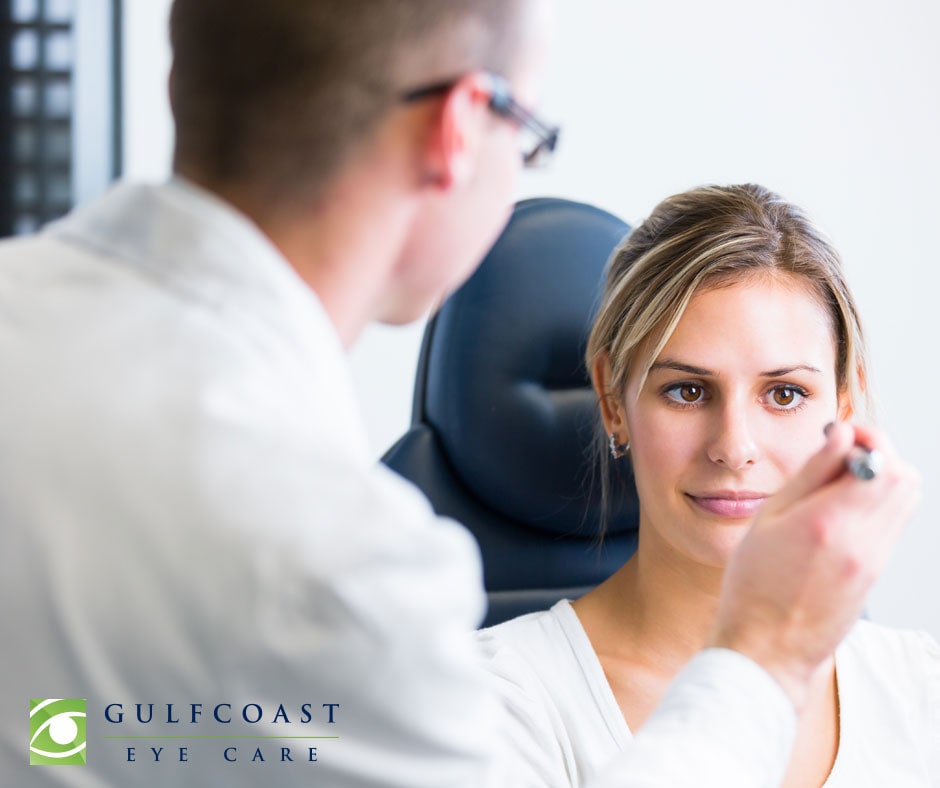 LASIK and PRK here at Gulfcoast Eye Care are the two major types of laser vision correction available, and both have proven to be very effective at significantly improving refractive errors such as nearsightedness, farsightedness, and astigmatism. In fact, LASIK and PRK can reduce and even eliminate the need for glasses and contact lenses. While many individuals are candidates for laser vision correction, there are some pronounced differences between LASIK and PRK that often make one technique more beneficial than the other for certain patients.
LASIK and PRK here at Gulfcoast Eye Care are the two major types of laser vision correction available, and both have proven to be very effective at significantly improving refractive errors such as nearsightedness, farsightedness, and astigmatism. In fact, LASIK and PRK can reduce and even eliminate the need for glasses and contact lenses. While many individuals are candidates for laser vision correction, there are some pronounced differences between LASIK and PRK that often make one technique more beneficial than the other for certain patients.
Let’s start with the similarities between LASIK and PRK:
- Both procedures can be performed on an outpatient basis and typically take only minutes to complete
- LASIK and PRK are laser vision correction treatments designed to correct common refractive errors and help you see more clearly without the aid of eyeglasses and contacts
- Both involve reshaping the eye’s cornea
- Both procedures typically involve only minimal discomfort – most patients experience a just slight pressure sensation during treatment
Now let’s look at some of the differences:
- LASIK involves the creation of a corneal flap to correct for refractive errors. The flap is then replaced when the procedure is complete, and should naturally heal without the need for stitches. PRK does not require the creation of a corneal flap. The laser gently removes a thin layer of corneal tissue from the surface, ultimately flattening it to better refract light and improve vision.
- Patients who have very thin corneas may not be candidates for LASIK; however, PRK can often serve as an alternative solution for these patients since it does not require a corneal flap to be created.
- PRK may be more beneficial for patients who have an irregular corneal curvature, have a history of dry eye, or are involved in sports, hobbies, or professions that have a high risk of facial trauma. An impact to the eye may dislodge a corneal flap after a LASIK procedure.
- Light sensitivity, irritation, and other temporary side effects do not typically last long after LASIK – only a few hours, in some cases. With PRK, these effects are known to take a few days before they dissipate.
- Although the optimal visual results are often very similar, patients who have LASIK often experience them sooner than patients who have PRK.
- PRK patients generally need to use steroid and/or antibiotic eye drops for several weeks after treatment; LASIK patients usually need to use these medications for only about one week.
Essentially, whether LASIK or PRK is a better option depends on your unique needs and lifestyle. The fact is that both of these procedures are designed to do the same thing – reduce your reliance on corrective eyewear – and both have been doing just that in patients all over the world for many years!
For patients who are not candidates for either procedure, there are a number of other vision correction options that may serve as suitable alternatives. The best way to find out which treatment is right for you is to have a comprehensive eye exam and consultation. Dr. Michael Manning can talk with you about your goals and help you determine whether LASIK or PRK is more ideal for your needs.
You can find more comparisons between LASIK and PRK on our laser eye surgery frequently asked questions page.
If you would like more information on LASIK, PRK, or other vision correction options, please contact Gulfcoast Eye Care today.

 LASIK and PRK here at Gulfcoast Eye Care are the two major types of laser vision correction available, and both have proven to be very effective at significantly improving refractive errors such as nearsightedness, farsightedness, and astigmatism. In fact, LASIK and PRK can reduce and even eliminate the need for glasses and contact lenses. While many individuals are candidates for laser vision correction, there are some pronounced differences between LASIK and PRK that often make one technique more beneficial than the other for certain patients.
LASIK and PRK here at Gulfcoast Eye Care are the two major types of laser vision correction available, and both have proven to be very effective at significantly improving refractive errors such as nearsightedness, farsightedness, and astigmatism. In fact, LASIK and PRK can reduce and even eliminate the need for glasses and contact lenses. While many individuals are candidates for laser vision correction, there are some pronounced differences between LASIK and PRK that often make one technique more beneficial than the other for certain patients.